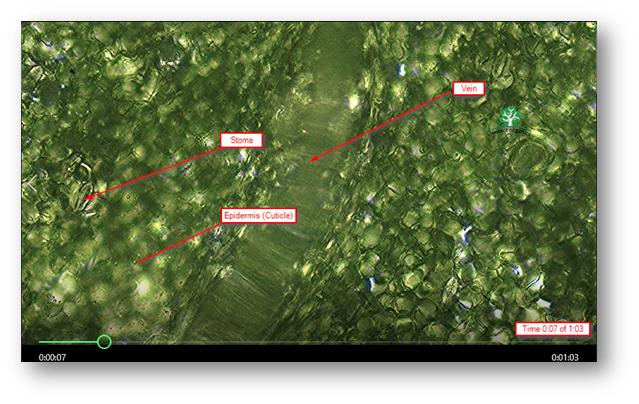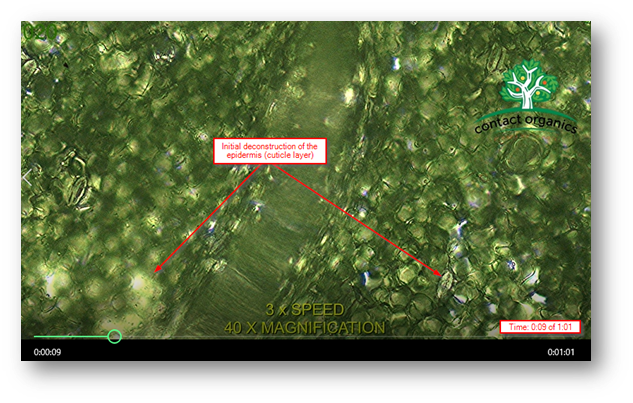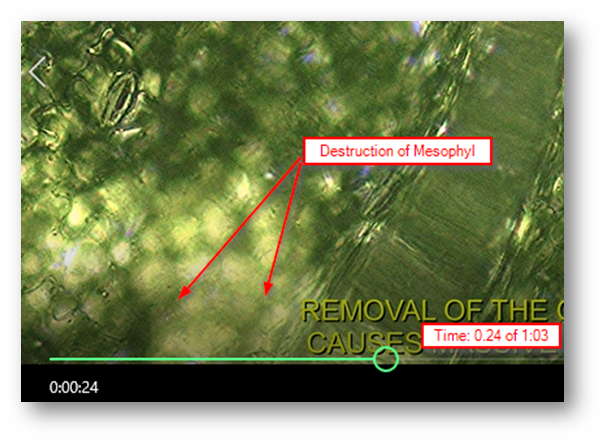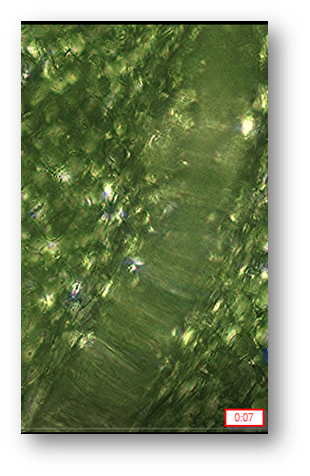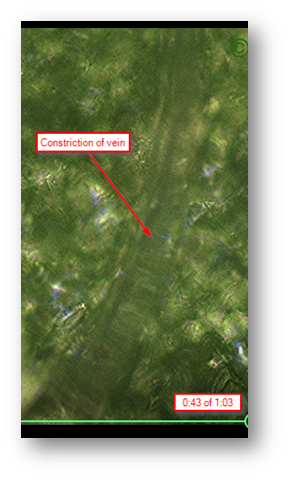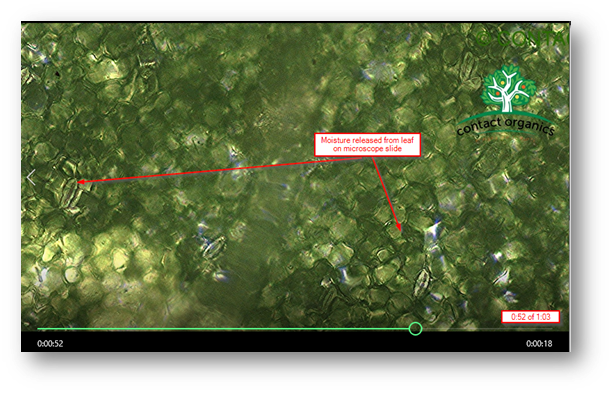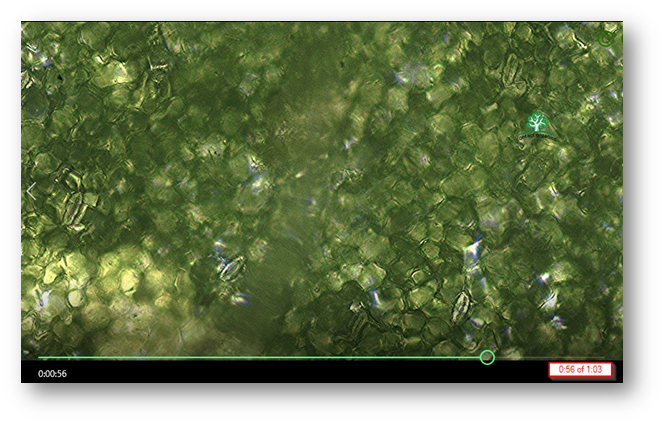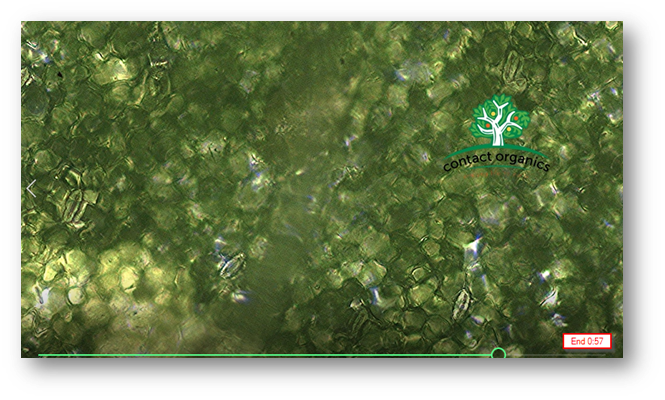Explanation of the Scientific Evidence
LEAF ANATOMY
To better understand what is happening in the video above, it is advantageous to have a basic knowledge of a leaf’s anatomy. The illustration below shows the generic makeup of a plant's leaf when magnified.
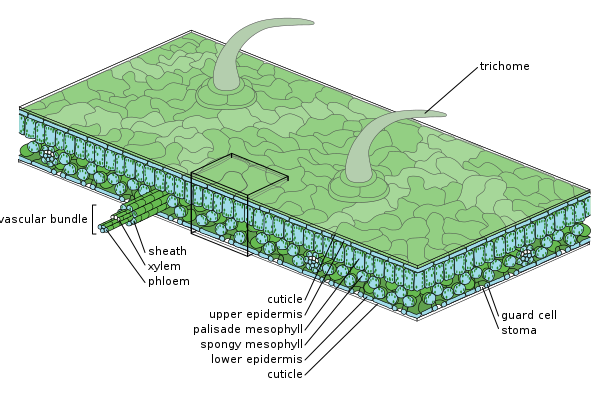
On closer inspection (under further magnification) the plant cells are discernible. The illustration below further names important components of the leaf structure.
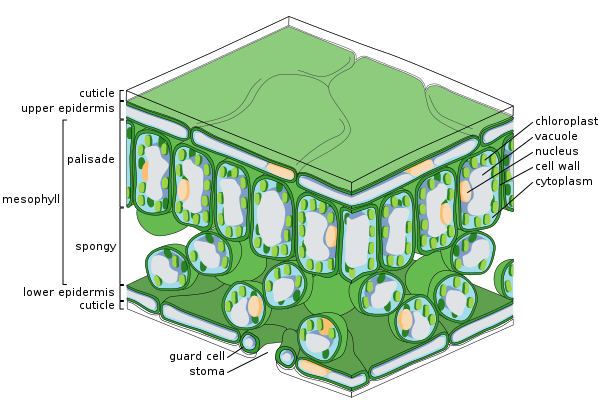
The energy from sunlight is converted to chemical energy that the leaf can use for photosynthesis. Molecules in the leaves, called Chlorophyll, use the energy from sunlight to turn water and carbon dioxide gas into sugar and oxygen gas.

Gases enter and exit through the stoma (or stomata, the eye shaped pores) on the epidermis (waxy skin) of the leaf and penetrate the mesophyll where the photosynthesis takes place. The stomata are responsible for controlling the passage of gases through the leaf epidermis. Importantly, the veins that support the leaf are filled with vessels that transport food, water, and minerals to the plant in order to sustain life. The image below taken through a microscope shows the stomata (eye shaped formations) which permit transmission through the epidermis.
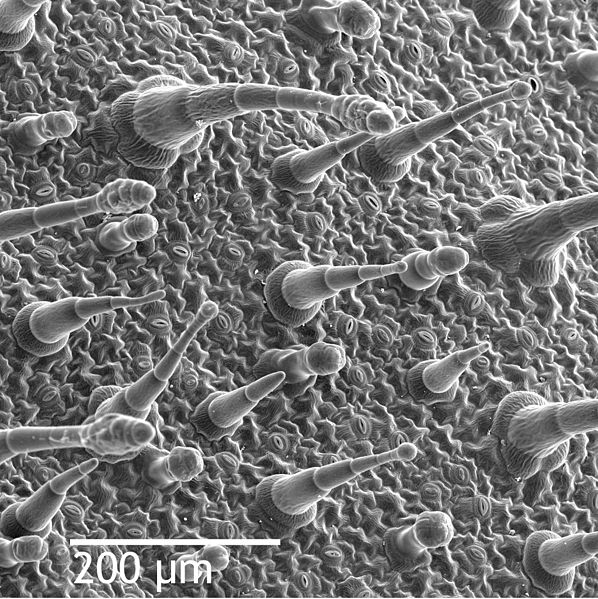
HOW THE CONTACT ORGANICS WEED TERMINATOR WORKS
The Contact Organics Weed Terminator prevents normal photosynthesis of the target plant by removing the protective layer of the leaf which is essential in retaining water. Without water the plant cannot obtain nutrients or continue its life cycle.
In the video, we can see how the Contact Organics Weed Terminator formulation works.
0:07 When Contact Organics Weed Terminator is applied, the product quickly spreads across the epidermis assisted by an active surfactant. Some product penetrates the mesophyll via passage through the stomata.
0:09 Acetic acid, the active ingredient in the Contact Organics Weed Terminators attacks the epidermis (cuticle) layer and removes the leaf’s ability to retain water. As water is a necessary component of photosynthesis, the plant life cycle is terminated.
The effective active ingredient of the Contact Organics Weed Terminator continues to further break down the leaf infrastructure. As a result, the mesophyll rapidly loses water accelerating the dehydration process.
0:24 You can now observe the spongy mesophyll (irregularly-shaped cells) normally protected by the epidermis decaying. The small pockets around the mesophyll cells are increasing as they continue to break down. The central vein which would normally assist the leaf with transporting essential nutrients is now beginning to drain of moisture and reduce in size.
0:43 Moisture loss has caused the vein to diminish in girth and further deterioration of the mesophyll has occurred. When compared to the same vein at the time of 0:07 the difference is obvious.
0:52 The leaf is now seen to have little basic structure and is unable to produce chlorophyll. Sunlight assists to deplete what little moisture is left within the cells. The moisture release from the leaf is apparent on the microscope slide by the double and blurred edges of the remains of the stomata and cuticle fragments.
0:56 Near the completion of the video the structure of the leaf could now be best described as having very little form and resembling a soft pulp. Moisture is trapped beneath the microscope slide whereas in the field the dehydration of the leaf can be observed as even more rapid.
Keeping in mind that the entire video is under 60 seconds. Arguably the first evidence of irreparable damage ie destruction of the epidermis, is under ten seconds in this example.
Additional trials have shown that after the first few reactions identified within the video, further decay continues in the completion of drying of the leaf and bleaching of the remaining material. The penetration of Contact Organics Weed Terminator will continue until it finds its way to the root system. No component of the plant is left viable.
SIDE BY SIDE COMPARISON
The comparison between beginning and 0:57 seconds clearly demonstrates the deterioration of the epidermis, the reduction of vein fluid transmission and reduction of the integrity of the mesophyll through water loss.
CONCLUSION
The better understanding of structure and science of a plant's life cycle has enabled Contact Organics to develop a formula that rapidly and effectively terminates unwanted weeds and plants without the reliance on dangerous and/or residual chemicals. Contact Organics Weed Terminator leaves no toxic residues or materials harmful to soil biodiversity, humans and/or animals.

 Australia
Australia New Zealand
New Zealand 日本語
日本語
